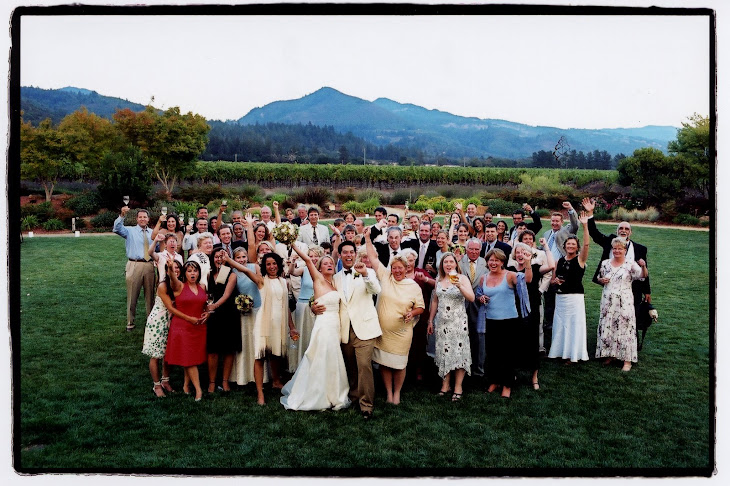I’m always reading other blogs,
along with magazines and papers, and so I’m constantly clipping and saving
tidbits I find interesting and think I might use on one of my blogs or in one
of my workshops. Oftentimes, though,
when I return to the clipping, I can’t recall why I had saved the info or where
it’s from!
And so it is with this item. .
.recently, I was sorting through a bunch
of posts I had saved regarding weddings.
I have no idea where I got the following, but apparently it’s a review
of a book written by Mark Ishee, titled,
“Wedding Toasts and Traditions.” I checked on Amazon and the book is now
out-of-print. However, I love the info
provided in this review – stuff related to the history of marriage I never
knew.
This brief history might put your
own planning into some perspective!
Cheers!
The author points to three stages
in the history of marriage: marriage by force, marriage by contract and
marriage by mutual love.
Marriage by force is indicated in
our earliest historical record. A man
captured a woman, generally from another tribe.
This testified to his strength in warfare. The earliest “best man” aided a friend in the
capture of a bride.
According to Ishee, the honeymoon
is a relic of the days of marriage by capture.
Frequently the tribe from which a warrior stole a bride came looking for
her and it was necessary for the warrior and his new wife to go into hiding to
avoid being discovered.
The “honeymoon” evolved as symbolic
of the period of time during which the bride and groom hid until the bride’s
kin grew tired of looking for her!
It is clear why marriages by
contract developed in time: the revenge exacted by one tribe on another for
taking one of their women was costly. At
some point, compensation began to be delivered for the stolen woman in an
effort to avoid vengeance. Preventing
tribal warfare and compensating furious family members led to a property
exchange: livestock, land or another woman would be exchanged for the bride.
As Ishee points out: “The very word “wedding” betrays the great
stage of wife purchase through which marriages passed. The ‘wed’ was the money, horses, or cattle
which the groom gave as security and as a pledge to provide his purchase of the
bride from her father. From this ‘wed’
we derive the idea of ‘wedding’ or ‘pledging’ the bride to the man who pays the
required security for her.
As time went on, this ‘bride’s
price’ took the form of elaborate presents given by the groom to the bride’s
parents. Negotiated over long periods of
time, sending and receiving constituted that the marriage contract was sealed.
In some cultures, land, livestock
and other valuables were given to the groom in the form of a dowry. These goods were offered as compensation to
the groom when he assumed the burden of supporting the woman.
Such practices of marriage by
contract lasted in England until the middle of the 16th century. The modern practice of ‘giving the bride
away’ has its roots in the belief that the bride was property given by the
father to the groom. In fact, the phrase
‘to have and to hold’ comes from Old English property transactions.
Marriage by mutual love was rare
until fairly recently. You did not marry
for love; rather, you were expected to love the one you married.
Ishee states: “It was not until the
9th or 10th century that women gained the privilege of choosing or refusing
their husbands according to their own judgment.
Rare exceptions to this are recorded since primitive times, where women
claimed the right to select their mates.”
The practice of elopement was an
early aspect of marriage by mutual love.
It allowed a woman to marry a man of her choosing, rather than one who
met her parents’ specifications.


No comments:
Post a Comment